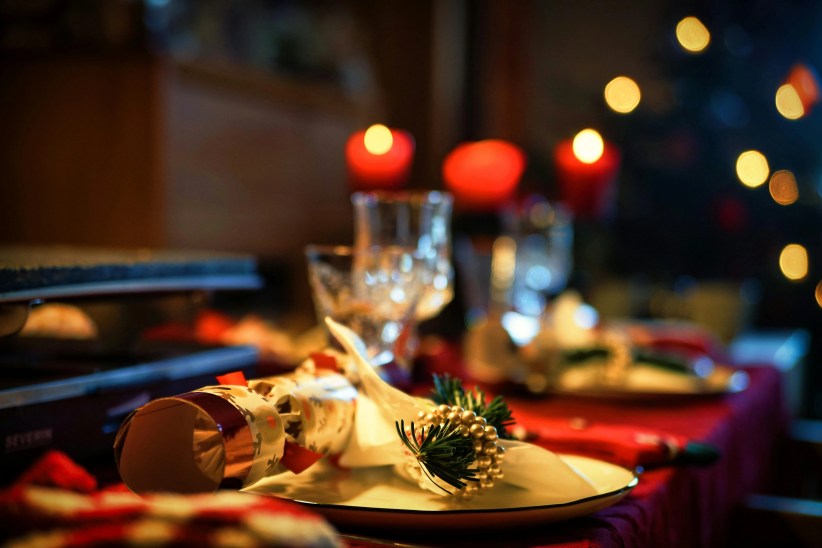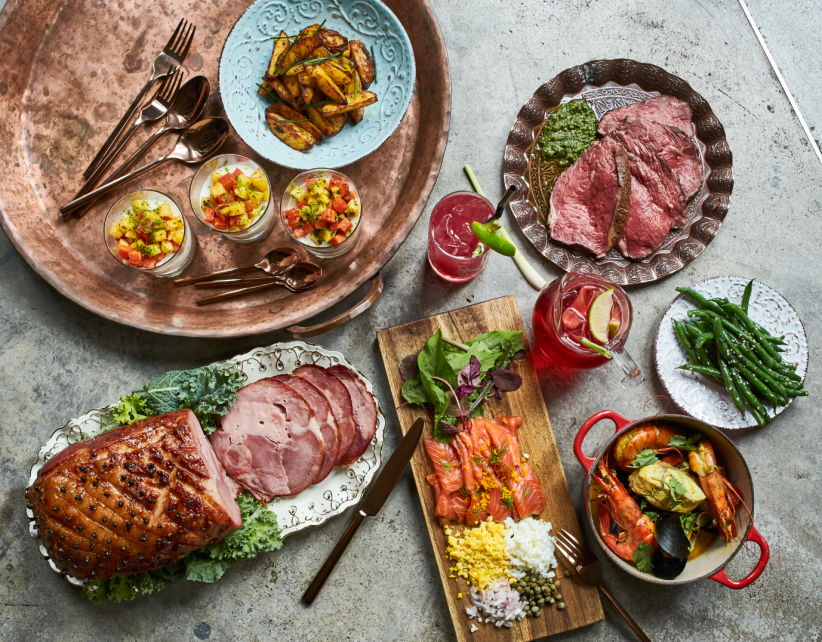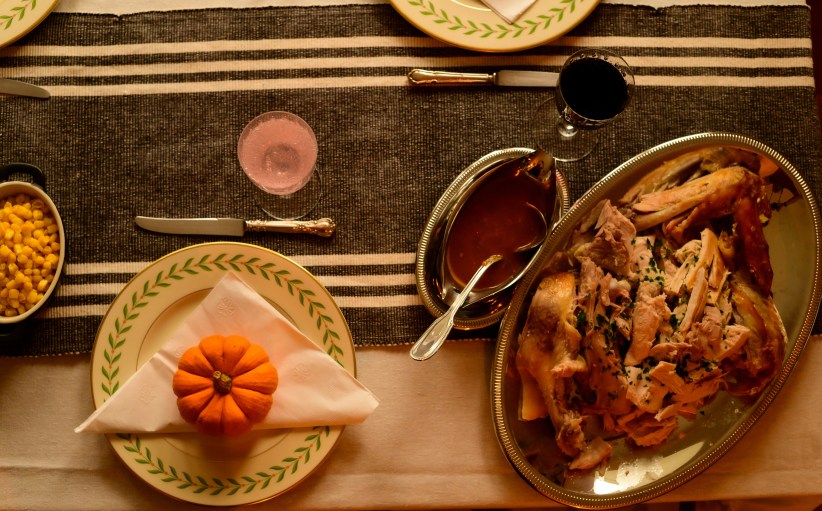 Katie Chin–an Asian food expert, TV personality, food blogger, and mom–has cooking in her DNA. She was raised in Minneapolis by her mother, Leeann Chin, an award-winning self-made chef and restaurateur, who was running a quick service restaurant empire of more than thirty restaurants at the height of her career.
Katie Chin–an Asian food expert, TV personality, food blogger, and mom–has cooking in her DNA. She was raised in Minneapolis by her mother, Leeann Chin, an award-winning self-made chef and restaurateur, who was running a quick service restaurant empire of more than thirty restaurants at the height of her career.
Leeann was a pioneer when it came to Chinese food in America, catering to many celebrities and doing cooking shows. So for Katie the passion for cooking blossomed at an early age when she was helping her mother in the kitchen and continued to grow later in her mother’s restaurants. When Katie’s mother passed away in 2010, she continued to carry the family cooking torch and to honor her mother with a collection of family recipes weaved with personal stories about the woman behind the wok.
Katie Chin’s Everyday Chinese Cookbook: 101 Delicious Recipes from My Mother’s Kitchen is an homage to her late mother—which would coincidentally make a perfect gift for Mother’s Day. From Chinese classics like Kung Pao Chicken and Shu Mai, to lesser known dishes like Steamed Cantonese Whole Fish, there is a recipe for everyone, from an advanced foodie chef to a toddler, trying out dumplings for the first time.
Katie has authored multiple cook books, appeared on the “TODAY Show,” the Food Network, and in national publications like Glamour, Family Circle, Cooking Light, and Bon Appétit. She has also served as a judge on “Iron Chef America” and participated in the White House’s annual Easter Egg Roll by demonstrating how to quickly and easily incorporate “super foods” into daily life. And she juggles all that with being a mother to a stepdaughter Kyla and 7-year-old twins, Dylan and Becca.
We caught up with Katie to get the inside scoop on her new book and discovered that it’s not just her impressive credentials or the mouth-watering photographs that will keep you engaged and enjoying each and every recipes, but rather it’s the touching memories and candid anecdotes, evoking her family’s journey of cooking through it all together.

Many of the recipes are prefaced by intimate family and friends stories. What was the inspiration behind writing this book?
My mother taught me everything I know about life and cooking in the kitchen. And I really wanted to honor her with a collection of special recipes: Some of these are family vault recipes and some were created together during our work in the catering family business. Her story is so inspirational—being an immigrant, not speaking any English, not even going to high school, and really personifying the American dream, going from making 50 cents an hour to building this incredible restaurant empire. So I really felt that I had to share her story as well as this this is a tool for my kids now. Some of my friends say they wish they knew how to cook dishes that their grandmothers and mothers made, but they didn’t write anything down. I feel so fortunate that my mother wrote two cook books of her own and then she taught me everything. And for my own children they can use it and pass it along to the next generations to come.
How is this book different from other Chinese cookbooks out there?
What I think makes this book different is that it is a very nice hybrid of authentic recipes and popular restaurant favorites, things that kids really love, like beef with broccoli, orange chicken, and general Tso’s chicken, that aren’t necessarily inauthentic—well, except maybe for general Tso’s because it was invented in the US—that we know people like to eat, but at same time there are some really authentic classics like the whole steamed fish Cantonese style, which is really simple yet very elegant, as well as lobster with ginger scallions. I wanted to gather a collection of recipes that wouldn’t be intimidating for the novice as well as for the people who are foodies and like to cook so they can find things that they can really roll up their sleeves and try something new. And also every recipe in this book you can pretty much make with your own pots and pans in your own kitchen, using the majority of ingredients you can find in grocery stores, with an occasional trip to the Asian market.
While the title of the book is Everyday Chinese there are also a lot of Cantonese, Thai, Szechuan, and other recipes included. Can you elaborate on that?
Because I think that’s every day! (Laughs). But I guess the whole idea is that these recipes can be part of your everyday repertoire once you get the fundamentals down.
Did being a mom influence any recipes in the book?
Definitely. Being a mom to 7-year old twins I’m much more attuned to what they like and what they don’t. The overarching philosophy is to involve them in cooking with me because I feel like when you involve children in the process they’re much more open to trying new ingredients, flavors, and things they would never try before because they got to put their hands on it. It’s also a great way to sneak veggies into dumplings and things like that. I’m a healthy eater in general but having kids I’m a little bit more conscious of that. If I were single, I would make some noodles with pork and call it a day because I knew I would be eating salad the next day, but I always try to balance out everything I make in that traditional way of Yin and Yang, a harmonious blend of dishes. So while you might have something fried—it’s for celebratory occasions usually in Chinese traditions—you’ll balance it out with some vegetable dishes and something steamed.
Kids learn eating habits early on so if you expose them to all these different tastes, textures, ingredients, and cooking methods, it just becomes more normal to them. If you as a parent don’t make a big deal about it it’s not a big deal. I’m rather proud of the fact that they’d much rather have dumplings than McNuggets. They ask me to make the soup that grandma used to make. Food is part of storytelling in our family. It links them to my mom in so many ways and that is so touching to me. My daughter actually started her own YouTube channel. I did not push her at all. She, on her own, wants to carry on the tradition of teaching cooking and she loves it. It was so cute because the first time I shot my YouTube video, she was only 5 at the time I was practicing on my iPad and did not realize I left it running. So she was like: “Hello, I’m Rebecca, welcome to my cooking show. Today I am making Nutella sandwiches.” And then my son gets up there and whispers into the camera: “Try it you must like it.” It’s so fascinating and funny to watch kids being part of this technology culture. This generation, they don’t watch TV. [My daughter] is obsessed with watching baking videos on YouTube and when she did her own video she knew exactly what to say. She was like: “Now let’s get started, in this dish I’m making…” She points to the dish and everything. I didn’t say anything. It’s really fascinating.
What are your and your kids’ favorite recipes in the book?
My son’s favorite recipe is beef with broccoli; my daughter’s favorite is Lo Mein because she loves noodles so much. My favorite is the Cantonese style Chow Mein because it reminds me of the Saturdays my mom didn’t have to work. She’d always make that, a giant pot for our family to share, and this was also special because, early in the days, when we had no money and it was a pretty economical one pot meal. We so rarely saw her so it really brings out memories of us being together sharing that dish.
Did anything surprise you while doing research for the book?
Once I started telling the stories they started pouring out of me as I realized how much of my family memories growing up are centered on food. Chinese people express their love through cooking, not through compliments. My mother did not compliment us. Chinese parents would do this passive aggressive thing, where if my sister came home with all As she would get Peking duck, and I if I came home with all Bs, I’d get squat.
It was difficult to write this book on a deeply personal level because it was so emotional but it was very healing, I had to go through the emotional roller coaster to come out on the other side.
[gravityform id=”13″ title=”false” description=”false” ajax=”true”]
The book’s dessert recipes are not your typical Chinese ones. Who is your intended audience for the book?
Authentic Chinese desserts are red bean pudding or almond tofu soup which most Americans—and even Chinese-Americans—would never eat. I was born and raised in Minnesota. I wouldn’t necessarily call the book’s audience someone with an Americanized palette though; I would just say that it appeals to today’s modernized palette.
Takeout is a big part of American life. Any tips on getting the healthier options for your family when it comes to Chinese takeout?
Sure. A lot of people when they want to get Chinese takeout they crave certain things and that’s okay, but like everything it has to be in moderation. If you really crave egg rolls then have it, but balance it out with a healthy stir fried or steamed veggie dish; maybe ask them for light oil and only order one fried thing. Don’t get sweet and sour chicken, egg rolls, and crispy wontons at the same time. Balance it with a soup, for instance. Soups are filling but generally low in calories because Chinese soups don’t use cream or butter. Going back to that Yin and Yang philosophy and really balancing out what you order. And common sense—don’t eat the entire container of Kung Pao chicken for dinner.
Are there any misconceptions about Chinese food and cooking you’d like the book to clarify?
Yes, I think there are some misconceptions around certain things like Chinese takeout. I know there was an expose done a couple of years ago that compared different takeout foods and the calorie count for Kung Pao chicken was through the roof, but it’s not meant for one person to eat in one sitting. The way Chinese food is served is family style. We order a few different things; it’s a multi-course type of meal so I feel like that was taken out of context. Things are meant to be shared. You don’t sit down and eat 4 fried entrees. You’re supposed to have a little bit of this, a little bit of that, truth of the matter is Chinese food as a whole is quite healthy because its origins were at a time when very little protein was available, it was mainly vegetables and noodles or rice and things cooked at a very high temperature in a wok, requiring very little oil. That’s really the back bone of Chinese cooking. And a lot of steaming. So I think the fried part of Chinese food just became much popularized in America.
Which dishes in the book are the most kid-friendly recipes that are fun and easiest to make with children?
I would say that the Potstickers recipe is very easy to make, dumplings like Shu Mai, because kids can get involved, help make the filling together and shape the dumplings with parental supervision for steaming or pan-frying. I always say no matter how good they look they still will taste delicious! Kids can put their own stamp on the design and play around with fillings. They’re relatively healthy and they are fun to make.
Once you start feeling comfortable with your Chinese dishes that’s when you start improvising. Why not throw in a bit of steamed spinach in your dumpling when kids are not looking or some peas for the fried rice recipes? The other great thing is that dishes like fried rice are fantastic for leftovers because you can have some chicken from night before or even some grilled steak or shrimp cocktail, you just throw it in there with whatever vegetables you have on hand.
I also have a tip of going to the grocery store’s salad bar because everything is cut and clean and ready to go. And in many case it can be even more economical if you’re cooking for one or two people so you don’t have a lot of waste but also it’s such a time saver. I tried to incorporate a lot of time-saving tips like that as well as some tips that my mother taught me in the book. For example, most people have garlic in their homes, but not fresh ginger because it goes bad quickly. My mom used to come to my house in LA, watch soap operas, peel like 10 lbs of fresh ginger, run it through the food processor so it’s finely minced, put it in Ziploc freezer baggies, then cut it down so they are flat, freeze them, and then just snap off whatever you need. You can do the same thing with lemongrass and Thai basil.

Do you have any plans for a kids’ cookbook follow up?
That’s a great idea! I would love to really focus on kids, but not quite sure what form that might take, but I think it’s the future and especially because kids today—with the Food Network and “Top Chef”—are so into cooking that it’s really the right time to capitalize on that and teach kids about healthy eating and nutrition.
What future projects can our readers expect from you?
I can’t really talk about what my next book will be, but I’m working on a concept. I’m also doing an online Asian noodle course on craftsy.com. They started offering cooking classes not too long ago. I’ll be doing an Asian noodles cook class from all over Asia and that should be available in May. I’m doing everything from Korean Chop Suey to Shoyu Ramen to Pad Thai to Chow Mein. That will be a lot of noodle fun!
Katie Chin’s Everyday Chinese Cookbook: 101 Delicious Recipes from My Mother’s Kitchen will be available for purchase on April 26 on Amazon.com and at book stores nationwide. To learn more about Katie Chin, visit thesweetandsourchronicles.com or youtube.com/ChefKatieChin!























